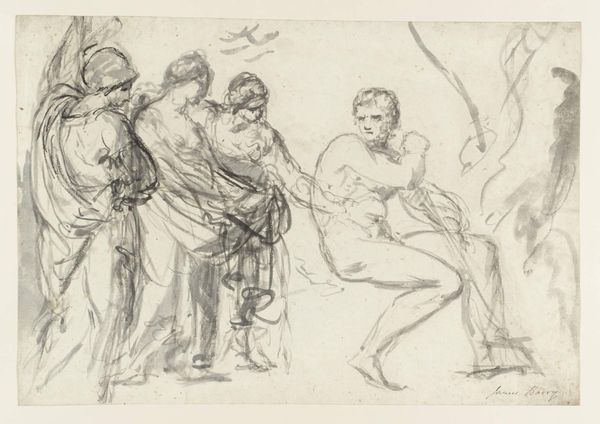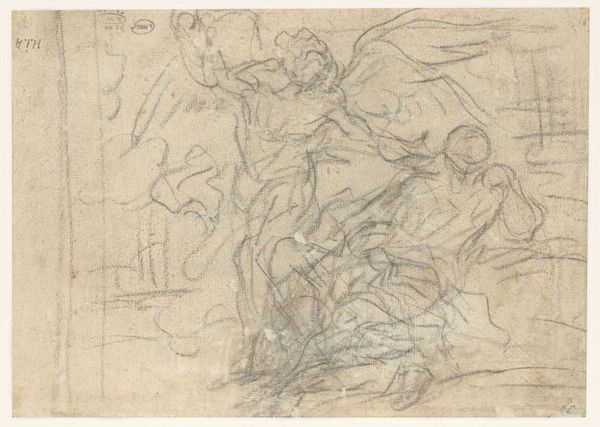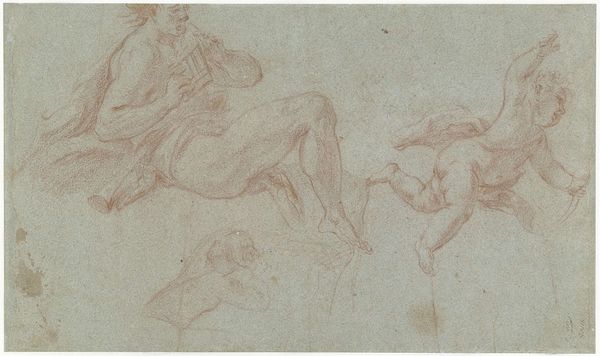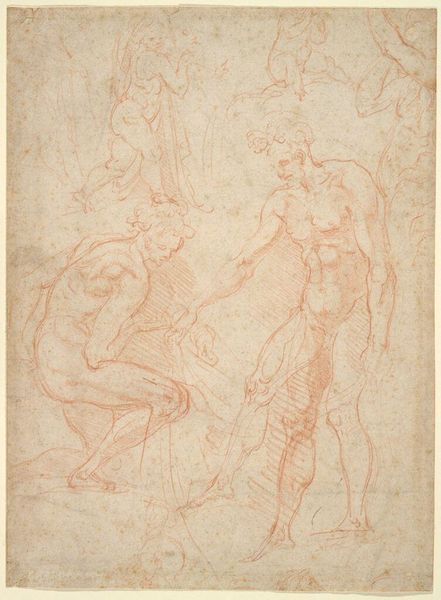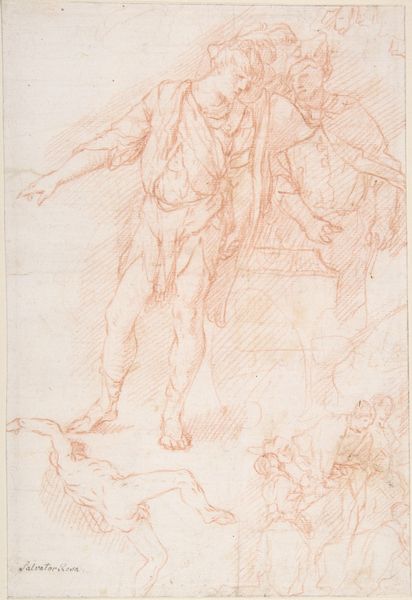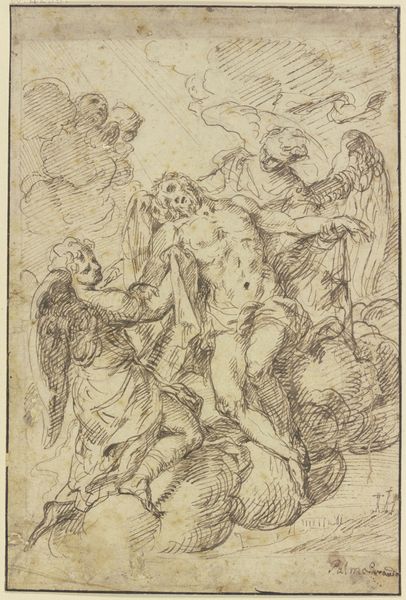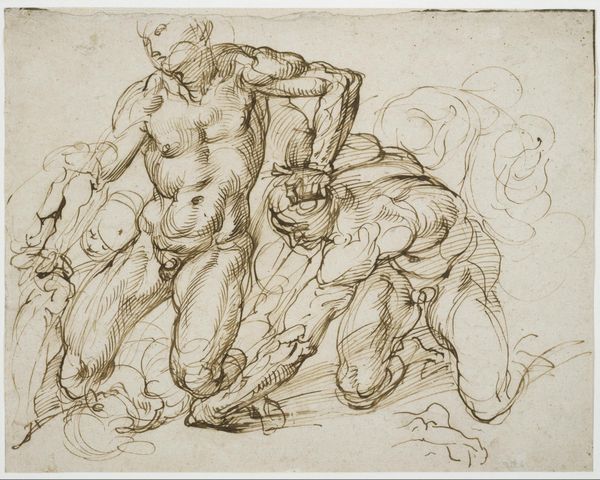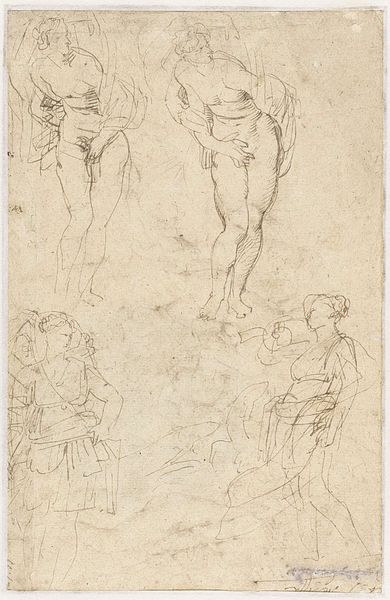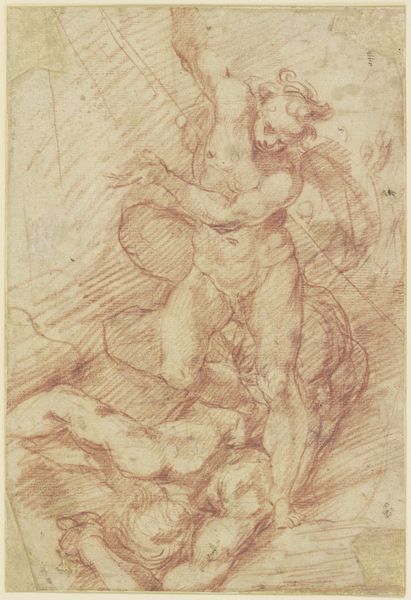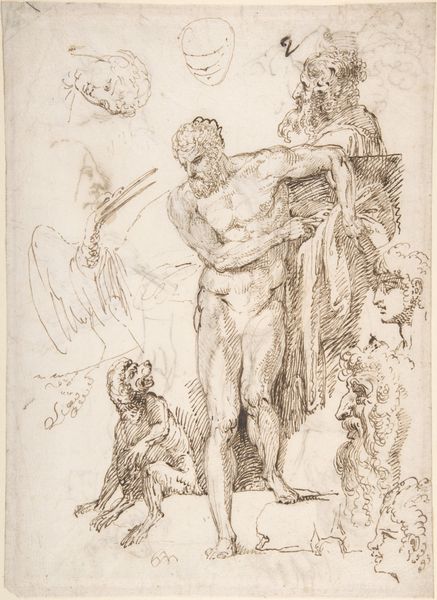
Dimensions: height 154 mm, width 212 mm
Copyright: Rijks Museum: Open Domain
Editor: We're looking at Annibale Carracci’s "Three Sketches of a Man Wielding a Club," made sometime between 1570 and 1609. It's a pen and ink drawing at the Rijksmuseum, and it strikes me as so dynamic. What do you make of it? Curator: Well, it is tempting to simply interpret this as a study of male anatomy in dynamic poses, especially considering the era. However, I'm more drawn to thinking about where Carracci may have intended for these studies to land. These are three separate poses. Who would've seen this sketch, and how would they have interpreted this exercise of power? Editor: So, you're suggesting we think about the role of the patron or the art market? Curator: Precisely. Academic art of this period was so tied up with both civic and religious authority. How might this figure, clearly possessing power and strength, been incorporated into a larger narrative that upheld existing social structures? Or, conversely, did Carracci ever attempt to undermine that? Editor: That’s interesting. The theatrical pose does seem intended for display, not just personal study. It's powerful and assertive. It almost feels like it's begging to be part of a larger statement. Do you think this sketch’s display within the museum setting impacts our reading of it? Curator: Absolutely. We now view this as a piece of autonomous artistic expression. In its own time, though, it's entirely possible this drawing would be regarded as part of a larger system of patronage and power that might even influence contemporary social or political discourse. This piece really demonstrates the many ways the purpose of art has changed, and how that can change our modern perception. Editor: Thanks, that really opens up my thinking about not only what this drawing means now, but what it represented during its creation.
Comments
No comments
Be the first to comment and join the conversation on the ultimate creative platform.
